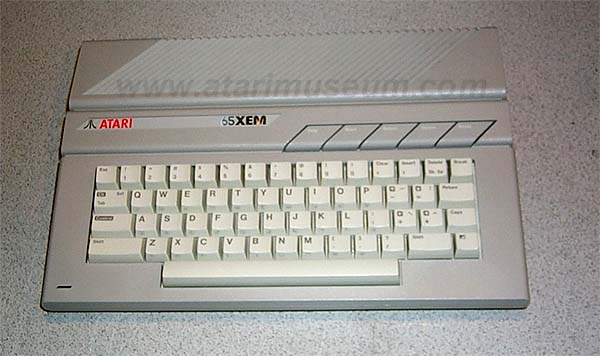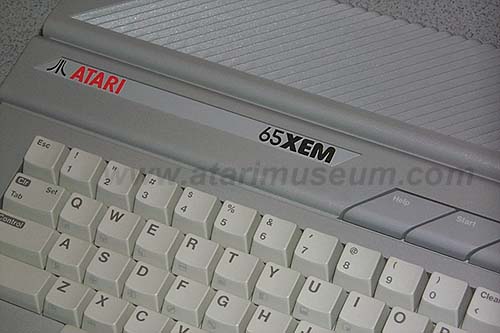

The Atari 65XEM Personal Computer System. This unreleased computer was a standard Atari 65XE computer fitted with a special Audio Processor called "AMY" Shown at the 1985 CES, the 65XEM was touted as having remarkable capabilities for sound/voice synthesis.
The AMY Sound Processor was original a chip designed for Project "GAZA" in 1983 in the Advanced Technologies Group (also referred to as the Atari Corporate Research Lab) in Sunnyvale, CA. Amy was one of two new chips for a high end dual 68000 processor audio/video workstation that was designed and working prototypes were built. The graphics processor was called "Rainbow". Together these chips created a formidable computer system capable of graphics and sound rivaling many computers which came out years upon years later. Unfortunately these computers would never see the light of day due to the sale of Atari in 1984.
AMY was demonstrated in 1983 performing a demonstration of a Female Opera
singer, then on the fly was instructed to perform the same opera in a Male
voice.

With the firing of the Advanced Technologies Group at Atari, the new engineering staff now under the leadership of the Tramiels attempted to wedge this chip into an Atari 8bit, hence the Atari 65XEM. However without the original designers, getting the chip to function properly became an expensive burden which the Tramiels could not afford, all finances needed to be channeled into the new 16/32 bit computer line.... the ST.
The AMY chip and technology were sold to a Millwaukee based audio design
house called Sight & Sound. The company was
able to not only decypher the workings of the AMY, but created a newer
and more powerful version which they intended to market.
However Atari suddenly reappeared on the scene and initiated a law-suit
that apparently was so frightening that many of the former S&S employees
that have been interviewed for the research on the AMY chip would only
talk under anonymity. The AMY chip,
its technology and its enhanced replacement would not only never be used
by S&S, but Atari never utilized the technology either.
The designs, equipment and chips lanquished in a warehouse until 1998 when
the company was liquidated and everything was sold off or destroyed.
One of the original programmers of the AMY chips software was John Palevich
(who would later write Dandy as part of the APX (Atari Program Exchange,
a division of Atari that published high quality software from independant
programmer), which was an amazing D&D type game that Atari would later
base its Atari Gauntlet franchise on. John also did Atari
Dark Chambers which was another Dandy variant for the Atari home consoles
) and some of his original software still exists on some demostration and
development disks that came with this 65XEM prototype.
It is a true shame to see such wonderful technology wasted and not implemented
as its creators and potential users were the ones who would suffer from
not seeing its potential brought to the public.